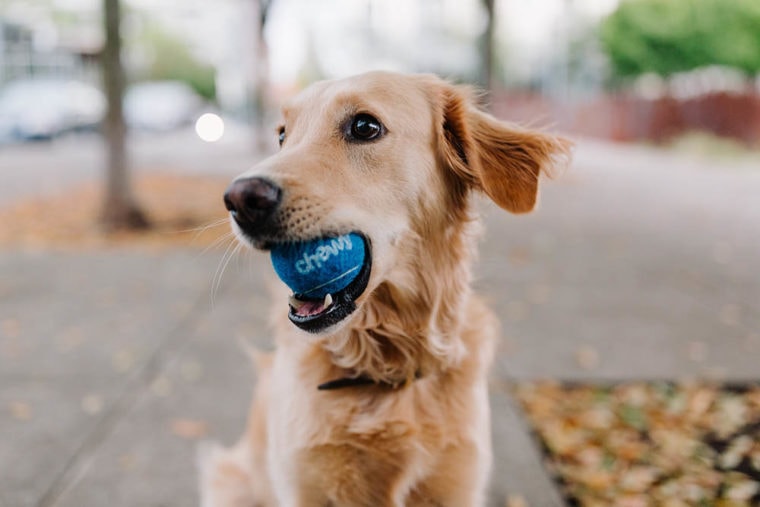
Click to Skip Ahead
There are plenty of times when you have probably wished you could shout a simple command at your dog to have them drop what’s in its mouth. That’s precisely why the “drop it” command exists and is a highly recommended command to teach.
If you are ready and willing to teach your dog to “drop it” just follow these simple tips and tricks and you’ll have them trained in no time. We’ll also go over the benefits of successfully implementing this command and how to best go about your training.
The 7 Tips on How to Teach a Dog to Drop It
1. Offer Your Dog a Toy
The first step in this process is offering your dog a toy. You should aim to find a toy that they are interested enough in to keep in their mouths until it’s time for the next step. Since our entire goal is to make them drop something, we first need them to hold onto something.
If your dog isn’t too enthusiastic, try getting excited and enticing them to play. You may have to play around with several different toys before you find one they are willing to hang on to.

2. Present Your Dog with a Treat
Now that you have your dog holding a toy in its mouth, it’s time to present them with a tasty treat. Make sure it’s a treat they will love enough that it’s worth dropping the toy for. The entire purpose of this step is to get your dog to drop the toy.
If your dog isn’t highly treat motivated, we recommend using a low-value toy at first and then offering up a high-value toy or even lots of praise. Most dogs do well with the treat, but you’ll always want to have a backup plan just in case.
3. Offer the Treat When Your Dog Drops the Toy
As soon as your dog drops the toy, immediately reward them by handing over the treat. This causes a positive association with dropping the object. Allow your dog to savor their treat and then offer up the toy once more.
If you are not using a treat, this is where you would implement an alternate reward or praise to show them that they’ve done a great job.
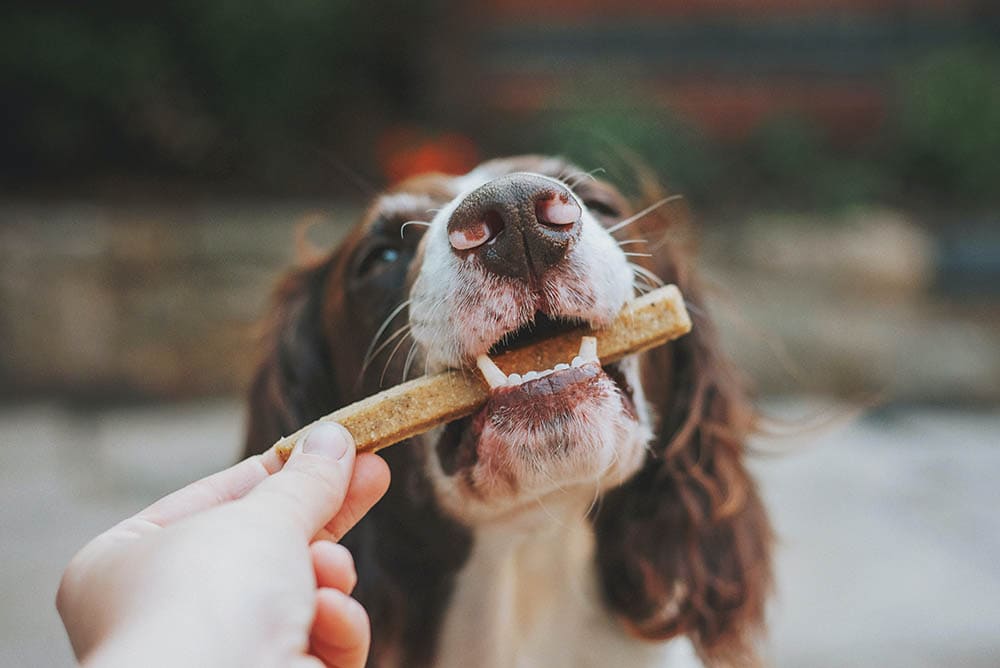
4. Repeat This Cycle Several Times
Repeat this cycle several times so that your dog can really get the hang of the process. Once you’ve established that they will be getting a reward each time they drop the toy, it’s time to implement the next step.
5. Start Using the Verbal Cue
Now is the time to introduce the verbal cue. For most owners this will be “drop it” but this is entirely up to your personal preference and what cue you want your dog to use. This time around, when your dog releases the toy to take the treat, say the verbal cue nice and clear and then reward them. Many people also like to pair a verbal cue with a hand signal. For example, start with your hand in a loose fist open the hand wide with the palm down, and return to a closed fist for a drop-it signal.
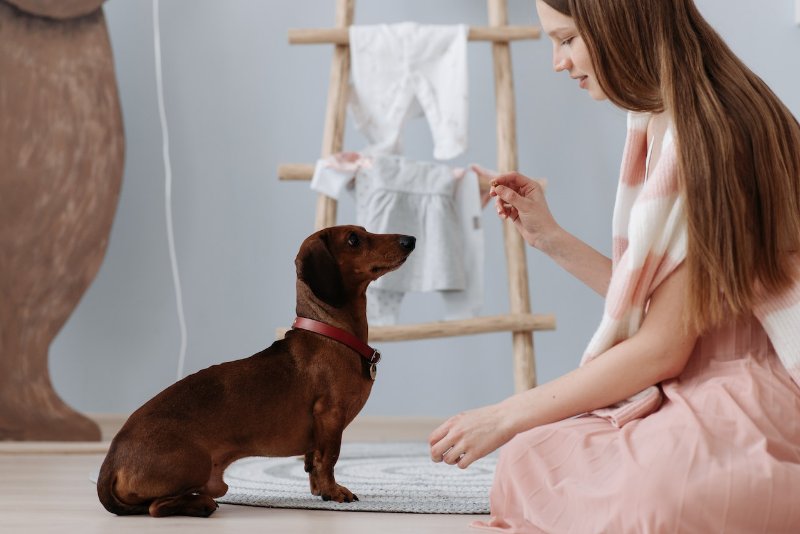
6. Repeat the Process Using the Verbal Cue
Keep repeating the process using your established verbal cue to ensure your dog is associating the words with the action. This training needs to be consistent to ensure the new command sticks. It’s important to state the command clearly and concisely so that your dog can easily understand each time you say it.
7. Practice with Other Toys and Objects
Not only is consistency important, but so is practicing with other objects. You want your dog to listen to this command regardless of what they have in their mouths. Try the process out on different toys around the house. If you notice them picking up anything they shouldn’t, quickly give the command.
Keep training sessions around 5 minutes or so, to not bore them with the process. You will have better success if they look forward to training as opposed to feeling bored or distracted.
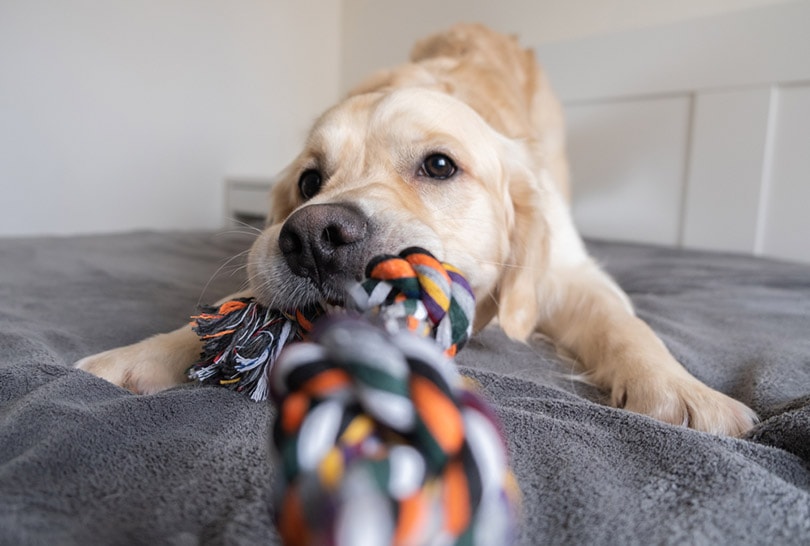
Why the “Drop It” Command Is So Important
The “drop it” command will give you freedom from having to chase after your dog when they have something in their mouths. Not only can it potentially keep your dog safe by having a quick fix if they were to pick up something dangerous, but it can also prevent random objects from being destroyed.
This command can also help prevent resource guarding that can stem from having to physically remove things from their mouths. If your dog is already showing signs of resource guarding, you need to be on the safe side and try consulting a professional dog trainer for assistance.
“Drop it” can also be a beneficial command when it comes time to play fetch. A lot of dogs enjoy running after the ball and coming back to you, but many of them are a bit hesitant to give up the prize. This command will convince them to drop the fetched item so that you can continue the game.
The Benefits of Positive Reinforcement Training
When it comes to dog training, positive reinforcement is the way to go. Here are some of the benefits associated with positive reinforcement, which are backed by scientific studies.
Form a Stronger Bond with Your Dog
Positive reinforcement training can significantly strengthen the bond you have with your dog. Positivity during training will build your dog’s confidence and make them feel happier overall. They will genuinely enjoy spending this time with you, will thrive on learning new things, and you are sure to enjoy the training session much more if it’s light and positive in nature.
Eliminates Fear
Training methods that are based on punishment or negative reinforcement can cause your dog to react out of fear. This can hurt the training process, and they may even freeze due to fear of being punished. This can lead to a significant delay in learning commands and behaviors. Positive reinforcement training puts the focus on rewards for good behavior, eliminating fear.
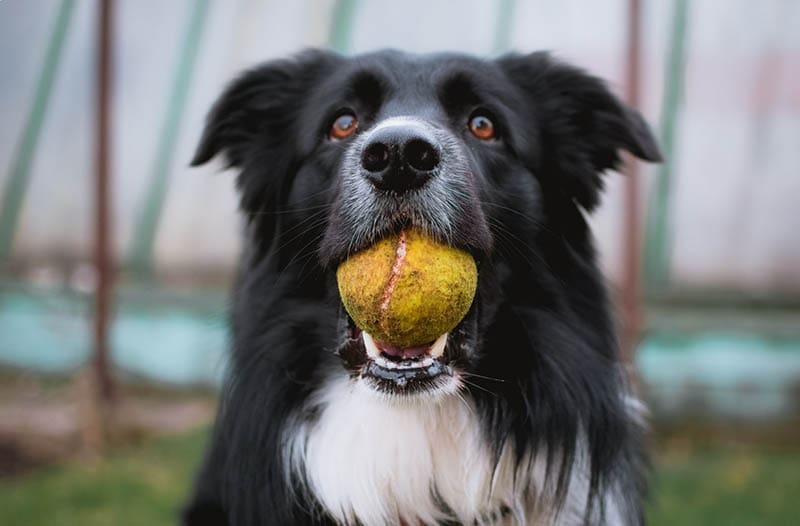
Your Dog Will Enjoy Training
Most dogs thrive on praise and aim to please their owners. When you meet them with praise and rewards for their good behavior, they will enjoy training sessions rather than being opposed to them. You may even find that your dog goes out of its way to do learned tricks to convince you it’s time for training.
Other Family Members Can Get Involved
Positive reinforcement training is great for the entire family. Since everyone in the household is living with your dog, it’s a good idea to get them involved in the training process. After all, you want your dog to respond and listen to everyone.
You can even teach the little ones how to give commands and safely reward the dog. This should be done under adult supervision of course, but it’s a great way to get the whole family to bond with the dog.
Conclusion
Training your dog to “drop it” can be easily done in just a few simple steps and involves a lot of repetition. This command is essential and convenient for owners and has many benefits once your dog gets the hang of it. Always use positive reinforcement when training, as it is the best method for your dog to learn as quickly and effectively as possible.
Featured Image Credit: Chewy, Unsplash








